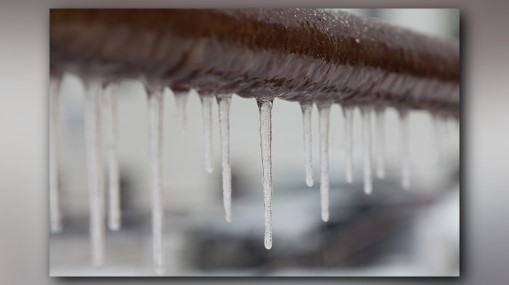Just how do you really feel when it comes to How to prepare your home plumbing for winter weather?

Winter can ruin your pipes, specifically by freezing pipelines. Right here's exactly how to prevent it from happening and what to do if it does.
Introduction
As temperature levels decline, the risk of icy pipelines rises, potentially resulting in costly fixings and water damage. Recognizing exactly how to prevent frozen pipes is critical for house owners in cold environments.
Recognizing Icy Pipelines
What causes pipelines to ice up?
Pipelines freeze when exposed to temperatures listed below 32 ° F (0 ° C) for extended durations. As water inside the pipelines freezes, it expands, putting pressure on the pipe wall surfaces and possibly triggering them to burst.
Threats and problems
Frozen pipes can result in supply of water disruptions, residential or commercial property damage, and pricey repair work. Ruptured pipelines can flooding homes and cause considerable structural damages.
Indications of Frozen Pipeline
Determining icy pipelines early can stop them from rupturing.
Just how to identify icy pipes
Search for lowered water flow from taps, unusual odors or noises from pipes, and visible frost on exposed pipes.
Prevention Tips
Protecting at risk pipes
Cover pipelines in insulation sleeves or make use of warmth tape to protect them from freezing temperature levels. Concentrate on pipes in unheated or outside areas of the home.
Heating strategies
Maintain indoor rooms effectively heated, specifically areas with pipes. Open up closet doors to enable cozy air to distribute around pipes under sinks.
Protecting Outdoor Pipes
Yard pipes and outdoor faucets
Separate and drain pipes yard tubes before winter. Set up frost-proof spigots or cover outdoor faucets with protected caps.
What to Do If Your Pipelines Freeze
Immediate activities to take
If you think frozen pipelines, keep faucets open to relieve stress as the ice melts. Utilize a hairdryer or towels taken in warm water to thaw pipes gradually.
Long-Term Solutions
Architectural changes
Consider rerouting pipes far from outside wall surfaces or unheated locations. Add additional insulation to attics, basements, and crawl spaces.
Upgrading insulation
Invest in premium insulation for pipelines, attic rooms, and walls. Proper insulation helps keep constant temperatures and decreases the threat of frozen pipelines.
Final thought
Protecting against frozen pipes requires positive steps and quick responses. By understanding the reasons, indicators, and preventive measures, home owners can safeguard their plumbing during winter.
6 Proven Ways to Prevent Frozen Pipes and Protect Your Home
Disconnect and Drain Garden Hoses
Before winter arrives, start by disconnecting your garden hoses and draining any remaining water. Close the shut-off valves that supply outdoor hose bibs and leave the outdoor faucet open to allow any residual water to drain. For extra protection, consider using faucet covers throughout the colder months. It’s also important to drain water from any sprinkler supply lines following the manufacturer’s directions.
Insulate Exposed Pipes
Insulating your pipes is an effective way to prevent freezing. Pipe insulation is readily available at home improvement stores and is relatively inexpensive. Pay close attention to pipes in unheated areas such as the attic, basement, crawl spaces, or garage. Apply foam insulation generously to create a buffer against the cold. You can also wrap your pipes in heat tape or thermostat-controlled heat cables for added warmth.
Seal Air Leaks
Inspect your home for any cracks or openings that could let in cold air. Seal any holes around the piping in interior or exterior walls, as well as the sill plates where your home rests on its foundation. Additionally, make sure to keep your garage door closed unless you’re entering or exiting. Leaving it open creates a significant air leak that can lead to frozen pipes.
Allow Warm Air Circulation
During cold snaps, it’s essential to allow warm air to circulate evenly throughout your home. Leave interior doors ajar to promote better airflow. Open kitchen and bathroom cabinets to help distribute heat consistently around the rooms. If you have small children or pets, be sure to remove any household chemicals or potentially harmful cleaners from open cabinets for safety.
Let Faucets Drip
A small trickle of water can make a big difference in preventing ice formation inside your pipes. When temperatures drop significantly, start a drip of water from all faucets served by exposed pipes. This continuous flow helps prevent the water from freezing. Additionally, running a few faucets slightly can relieve pressure inside the pipes, reducing the chances of a rupture if the water inside does freeze.
https://choateshvac.com/6-proven-ways-to-prevent-frozen-pipes-and-protect-your-home/
:strip_icc()/snow-outdoor-faucet-pipes-4af65d1e5e904fb1aa7bf74071fe5d89.jpg)
Do you appreciate reading up on Prevent Frozen Pipes ? Put a review below. We will be pleased to see your reactions about this blog posting. We hope that you come back again in the future. Sharing is caring. You never know, you may just be doing someone a favor. We love your readership.
Request Free Estimate